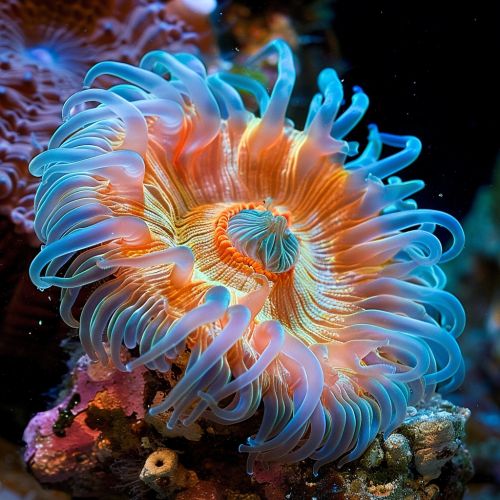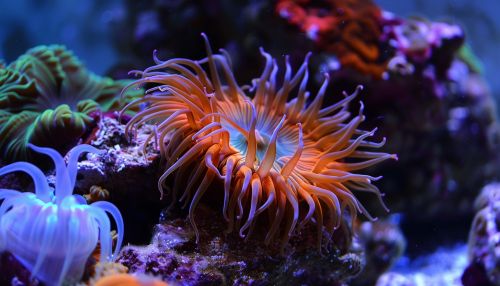Invertebrate
Overview
Invertebrates are animals that do not possess or develop a vertebral column (commonly known as a backbone or spine), derived from the notochord. This includes all animals apart from the subphylum Vertebrata. Familiar examples of invertebrates include arthropods (insects, arachnids, crustaceans, and myriapods), mollusks (chitons, snails, bivalves, squids, and octopuses), annelids (earthworms and leeches), and cnidarians (hydras, jellyfishes, sea anemones, and corals).


Classification
Invertebrates can be classified into several main categories. Some of these include the Porifera, Cnidaria, Platyhelminthes, Annelida, Mollusca, Arthropoda, Echinodermata, and others. Each of these groups has unique features and can be found in nearly every environment on Earth.
Porifera
The Porifera, or sponges, are multicellular organisms that have bodies full of pores and channels allowing water to circulate through them. They are among the simplest of animals, with no true tissues or organs.
Cnidaria
The Cnidaria include jellyfish, sea anemones, corals, and hydras. These animals are distinguished by the presence of cnidocytes, specialized cells that they use mainly for capturing prey.
Platyhelminthes
The Platyhelminthes, or flatworms, include many free-living and parasitic forms. They are characterized by their flat, soft bodies.
Annelida
The Annelida include the earthworms and leeches. These animals are segmented and have a true coelom, or body cavity.
Mollusca
The Mollusca include snails, clams, and squids. These animals have a soft body that in some forms is protected by a hard shell.
Arthropoda
The Arthropoda include insects, spiders, and crustaceans. These animals are characterized by their jointed limbs and cuticle made of chitin, often mineralised with calcium carbonate.
Echinodermata
The Echinodermata include sea stars, sea urchins, and sea cucumbers. These animals have a calcareous endoskeleton and a water vascular system that operates by hydraulic pressure, allowing them to move around by use of many small tube feet.
Evolution
Invertebrates are among the oldest forms of life on Earth. The earliest invertebrates evolved from protozoans more than 600 million years ago during the Precambrian Era. The first invertebrates were marine animals. Over time, invertebrates evolved into a wide variety of forms and began to colonize all parts of the planet.
Anatomy and Physiology
Invertebrates exhibit a wide range of modifications to survive in different environments. They use different ways to respire such as gills, tracheae, and through the skin. They have a variety of feeding and digestive systems. Most invertebrates use some form of active locomotion, ranging from swimming to crawling to jet propulsion. Invertebrates are also characterized by their reproductive methods; they reproduce both sexually and asexually.
Ecology and Life History
Invertebrates play critical roles in their ecosystems. They are often the most abundant organisms in a habitat. They can be herbivores, predators, parasites, or detritivores (decomposers). Some invertebrates, such as bees and butterflies, are important pollinators.
Human Interaction
Humans interact with invertebrates in many ways. Some invertebrates are used for food, while others are important in agriculture, both as pests and as pollinators. Some are kept as pets, while others are used in scientific research.
